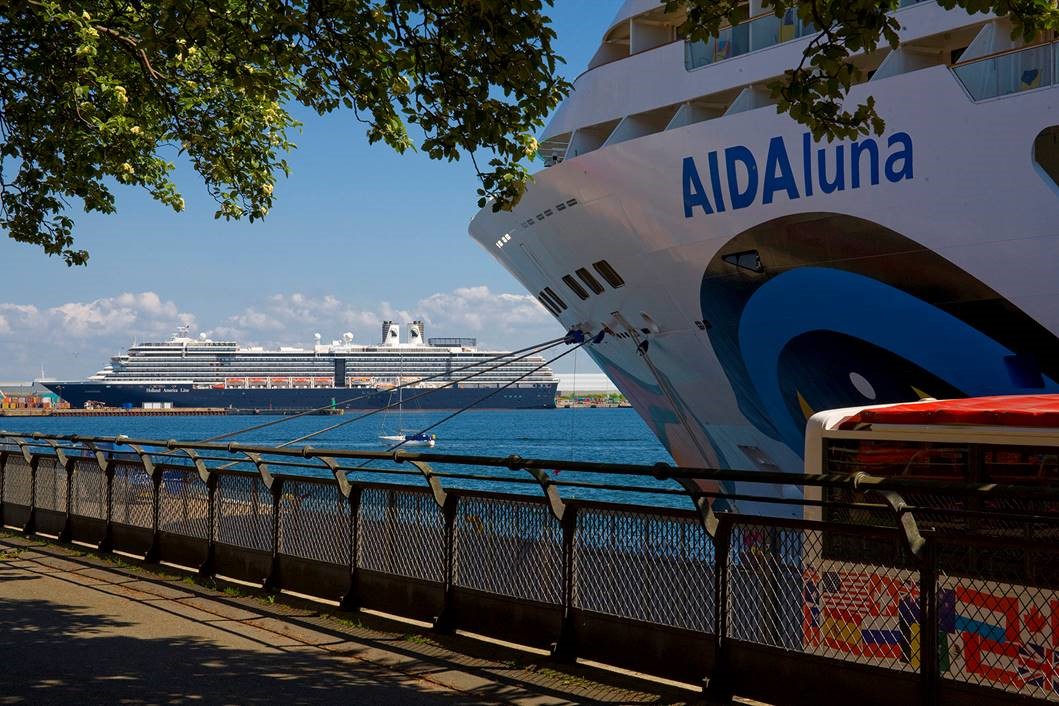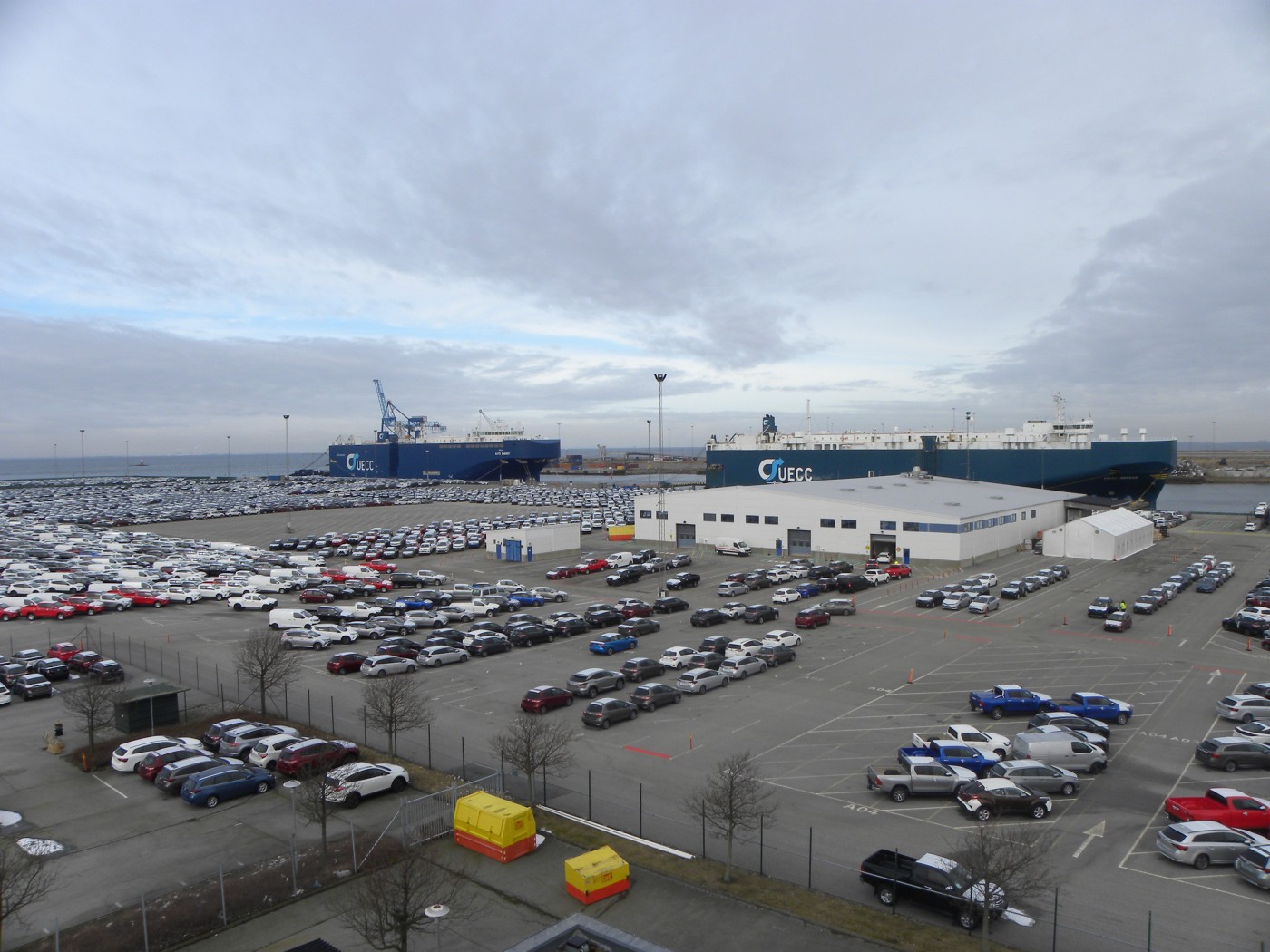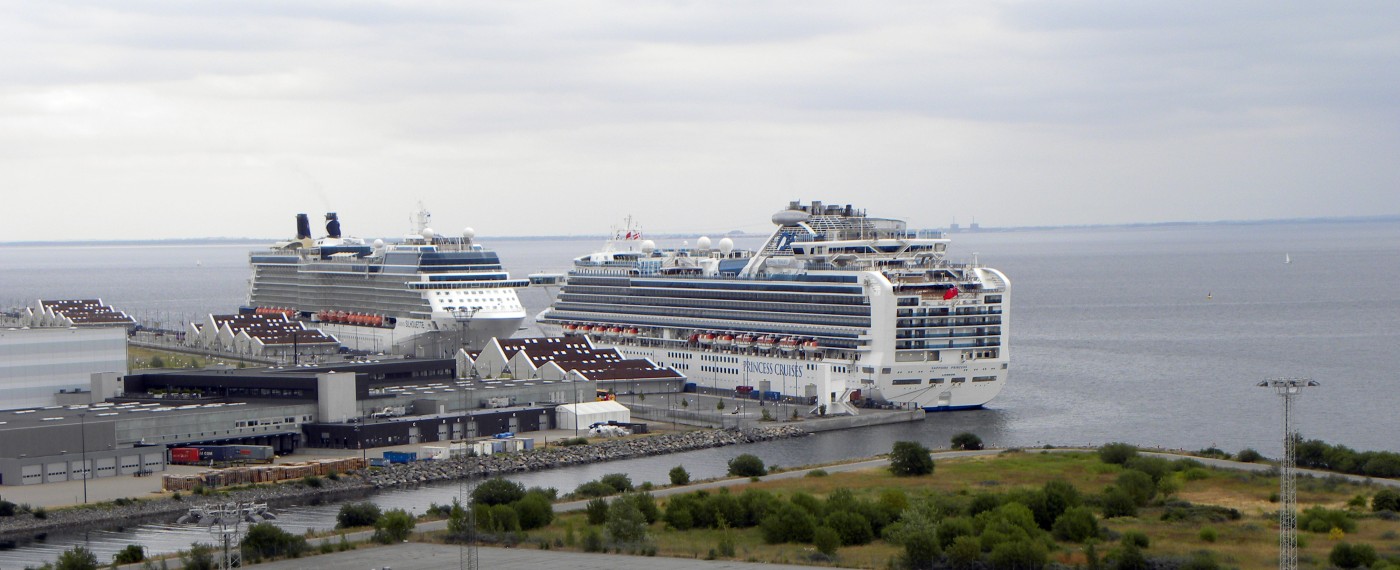03 June 2019
This month we are taking you to a port that is covering two countries: Copenhagen Malmö Port (CMP). In what follows, Ms Barbara Scheel Agersnap will take us on a tour through this binational port, talking about the merger of the ports of Copenhagen and Malmö, the cruise business in the port, the relation with the local population and many other interesting topics!
 Dennis Rosenfeldt.jpg) (c) Dennis Rosenfeldt
(c) Dennis Rosenfeldt
Can you briefly present Copenhagen Malmö Port? What are its main characteristics and challenges?
Copenhagen Malmö Port (CMP) is a port and terminal operator. In agreement with the port owners in Malmö and Copenhagen we also have the port authority responsibility in the two ports. CMP leases the land that we need for our operations. CMP is a full-service port with a long range of business areas. We are a hub for import and transshipment of new cars in Malmö and for the cruise business in Copenhagen. We are one company, operating in two countries and many of our employees work in both countries.
Our main challenge – besides climate challenge – is that city development in both Copenhagen and Malmö represents a challenge to our business as we need to move some of our activities. It raises our investment needs and our costs.
In recent years, some European ports have merged or intensified cooperation. In this context, the ports of Copenhagen and Malmö were genuine pioneers, as they were the first ports in Europe to merge into one transnational port authority. What was the reason for this merger? What are the main benefits of the merger and what are the main challenges? Do you think that mergers of ports or intensified cooperation between ports will become the new trend in the European port sector?
The merger was carried out together with the opening of the Copenhagen Malmö fixed link, and the ports in Copenhagen and Malmö decided to cooperate to reach a larger market.
The main benefits are the larger organisation and the possibility for customers to make use of one-stop shopping, specialisation and cheaper investments. Our main challenges lie in dealing with different business cultures and different legislations, which means that the administrative savings are lower.
Due to larger challenges for the ports, the merging of some ports may be of benefit, as they will have larger financial possibilities for investments and for getting involved in different business opportunities. But this will be a slow process and only concerns relatively few European ports.
 (c) CMP AB
(c) CMP AB
Copenhagen Malmö Port is a hub for the import and handling of new cars in the Baltic Sea Region. How is this business evolving? What are the main challenges?
The new cars handling has reached a proper level of around 350.000 car handlings. The car business is rather land consuming and the port needs to adapt to this. It is quite labour intensive and has busier days and quieter days, which means that you need a flexible labour force.
What are the main investment projects in the Copenhagen Malmö Port for the upcoming years? Could you briefly describe the importance of these investment projects for the port and both cities?
Back in 2009 we opened a new harbor area in Malmö with a trimodal concept. With these investments, we can develop the port for quite some years. In Copenhagen, the city development is consuming port land, and we need to move our container terminal a couple of kilometers to the north to newly claimed land. The terminal is important for the Greater Copenhagen area, as it covers 90-95% of the seaborne container handling for the region. The less attractive alternative would be longer road transport. Furthermore, we need to invest in a new cruise terminal, partly to be able to receive the optimal number of cruise calls and partly to be able to handle the largest ships carrying 4-5.000 passengers.

European ports are increasingly investing in digital solutions to increase the efficiency of the logistics chain and port operations. Is Copenhagen Malmö Port taking any initiatives towards digitalisation?
The process of digitalisation is a continuing process. In our development process for our business area, digitalisation is an integral part, and it takes many shapes, from apps for the cruise business to digital solutions towards authorities and to our customers.
Copenhagen Malmö Port is an important cruise port in Northern Europe. How is the business evolving? Do you foresee a bright future for the cruise business in your port?
The cruise business in the Baltic Sea region is ever growing, now being among the most popular destinations. We have seen a development of two-digit figures, although today the expansion is annually around 3-4% (counting the passengers). As many cruise ships have grown much larger, we see a more modest development in the number of calls but a considerable growth in the number of passengers. We expect this development to continue, and not only in Copenhagen. Visby had around 50 calls in 2017, but with our new cruise quay we had 95 calls in 2018 and we expect around 120 calls in 2019. Development possibilities are obvious, even though we expect more competition from the Asian market in the coming years, but then again also more Asians visiting our region.
 (c) CMP AB
(c) CMP AB
The EU Sulphur Directive came into force on 1 January 2015, creating a Sulphur Emission Control Area (SECA) in the Baltic Sea, North Sea and English Channel and limiting the maximum Sulphur content of fuels used by ships sailing these waters. How has this been of impact for your port and the environment?
As the bunker prices fell significantly around the same period as the SECA regulation went into force, the impact is very limited. We have seen a few of the oldest cruise ships move to other areas for their operation. Most Ro-Ro, Ro-Pax and Pax ferries use scrubber in our area for their purification, so they can still use heavy fuel. Some however use the 0.1% fuel, and we have increased the sale of this product in both Copenhagen and Malmö.
A good port-city relationship is of paramount importance to a port. Social media enables the citizen to more easily voice its concerns about any externalities of port operations, while it also allows to reach a greater audience. Which kind of initiatives is Copenhagen Malmö Port taking to ensure a good port-city relationship? What means are you using to communicate with the local population?
The biggest issue at present in our communication with the local population is related to the environment. We aim to use the most environmentally-friendly rolling stock. We have for several years investigated the possibility of offering shore power supply to the cruise ships, unfortunately without being able to make it a positive business case. In cooperation with the municipality, we have just started a new attempt and hope that this time we can succeed. We have occasionally organised an “open port” day for the local population, and we have achieved a great success with this.
Related documents
No attachments.
